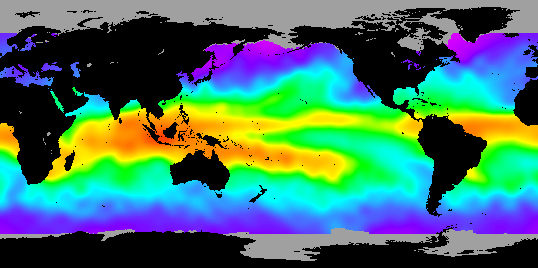Water, water in the air
Image of the Month - January 2000

What is the speed of light? Easy... 300,000 kilometers per second (well, 299,792,458 km/s to be precise). Yes, but that's in a vacuum. In a medium such as air, for example, light travels more slowly and its speed varies according to the medium's composition. Water vapor in the atmosphere, in particular, slows light waves.
Although we cannot actually see light slowing down, instances of water vapor in the air affecting light are not hard to find. Think of the way light is dimmed and dispersed through fog, whereas in dry weather you can see clearly to the horizon.
Radar waves transmitted by an altimeter are less sensitive than visible light to humidity and clouds (they can "see through" clouds), but water vapor in the air nevertheless does affect them. For this reason, altimetry satellites carry radiometers to measure water vapor content so that altimetric range measurements can be corrected. This process is known as wet tropospheric correction (the troposphere is the layer of the atmosphere containing water vapor). The correction applied is approximately 15 centimeters on average. That may seem insignificant for a wave that travels some 1330 kilometers, but it can make a huge difference when attempting to measure increases of only a few millimeters in the mean sea level. Improving the precision of such corrections is one of the goals of continuing research to ensure that satellite altimetry data are as accurate as possible.




